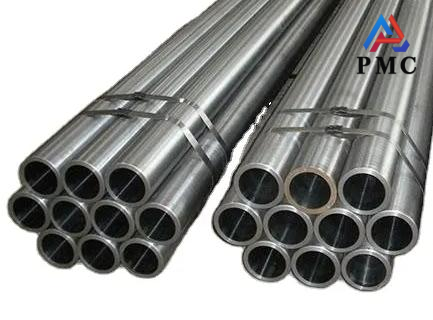
MS Seamless Pipe Standard Sizes
Mild Steel (MS) seamless pipes play a vital role across a wide range of industries, valued for their exceptional strength, durability, and smooth, uniform surface finish. Their seamless construction offers superior performance under high pressure and temperature conditions, making them ideal for structural frameworks, mechanical systems, and fluid transportation. For engineers, fabricators, and procurement specialists, having a clear understanding of standard sizes is essential to ensure proper design compatibility, operational efficiency, and cost-effectiveness. In this passage, we explore the essential dimensions, relevant industry standards, and key considerations for selecting the right MS seamless pipes for your application.
What is an MS seamless pipe?
An MS seamless pipe is made from mild steel and manufactured without a welded seam. This is achieved by piercing a solid billet and forming it into a hollow tube. The absence of welding lines makes seamless pipes stronger, more uniform, and better suited for high-pressure and high-temperature applications compared to welded pipes.
Manufacturing standards and material grades
MS seamless pipes are typically produced in accordance with several international and national standards, including:
ASTM A106 / A53 – American standards for high-temperature service.
IS 1239 / IS 1161 – Indian standards for structural and general engineering purposes.
DIN and EN standards – For European markets.
Common material grades include MS Grade A and Grade B, which offer good weldability, ductility, and corrosion resistance for standard applications.

Standard sizes of MS seamless pipes
1. Nominal Bore (NB) and Outer Diameter (OD)
|
NB Size |
Outer Diameter (OD)
|
|
1/4" |
13.7 mm |
|
1/2" |
21.3 mm |
|
1" |
33.4 mm |
|
2" |
60.3 mm |
|
4" |
114.3 mm |
|
6" |
168.3 mm |
|
12" |
323.9 mm |
Note: Exact OD may vary slightly based on the standard applied.
2. Wall Thickness (Pipe Schedule)
Wall thickness determines the strength and pressure capacity of the pipe. MS seamless pipes are commonly available in:
SCH 10, 20, 40, 80, 160
XS (Extra Strong), XXS (Double Extra Strong)
3. Standard Lengths
Commonly supplied in 6-meter (approx. 20 feet) or 12-meter (approx. 40 feet) lengths.
Custom lengths may be available upon request depending on the supplier and application.
MS seamless pipe size regulations in international standards
Interpretation of ASTM standards: The relevant standards formulated by the American Society for Testing and Materials (ASTM), such as ASTM A106, have clear and detailed regulations on the size of MS seamless pipes. Under this standard, the outer diameter of the pipe covers the range of 1/8 inch - 48 inches (DN6 - DN1200), and the wall thickness is divided according to the pipe schedule (Sch), from Sch10 to Sch160 and other grades. Different pipe schedules correspond to different wall thickness sizes to adapt to various pressure and temperature conditions. In high-temperature and high-pressure steam transmission pipeline projects, seamless pipes that meet the ASTM A106 standard are often selected to ensure the reliable operation of the pipeline under harsh working conditions.
API Standard Highlights: The API 5L standard of the American Petroleum Institute (API) is mainly for pipeline steel pipes for the oil and gas industry. The size of the MS seamless pipe specified in it has an outer diameter range of 1/2 inch - 60 inches (DN15 - DN1500), and the wall thickness is also divided in detail according to different strength grades and application scenarios. In the field of oil and gas extraction and transportation, seamless pipes that comply with the API 5L standard are widely used to ensure the safe and efficient transportation of oil and gas resources.
How to Select the Right Size of MS Seamless Pipe?
Choosing the correct MS seamless pipe size is essential for ensuring safe, efficient, and cost-effective system performance. Whether you're planning a pipeline, structural framework, or industrial process system, consider the following factors:
1. Pressure Rating Requirements
For high-pressure applications, select pipes with thicker wall schedules such as SCH 80, SCH 160, or XXS to ensure durability and resistance to internal pressure.
Flow Capacity Needs
A larger pipe diameter allows greater fluid or gas flow, making it ideal for systems requiring higher volume transport while minimizing pressure drops.
2. Installation and Space Constraints
Always check that the selected pipe fits existing layouts or system designs. Accurate sizing ensures smoother installation and avoids costly modifications.
3. Compliance with Industry Standards
Ensure your pipe dimensions align with recognized standards such as ASTM A106, IS 1239, or other relevant codes to guarantee quality and compatibility with fittings and valves.
Read more: Main Application Areas of MS Seamless Pipes
- 【Prev】 : Seamless Pipe VS MS Pipe
- 【Next】 : Rectangular Tube Sizes


